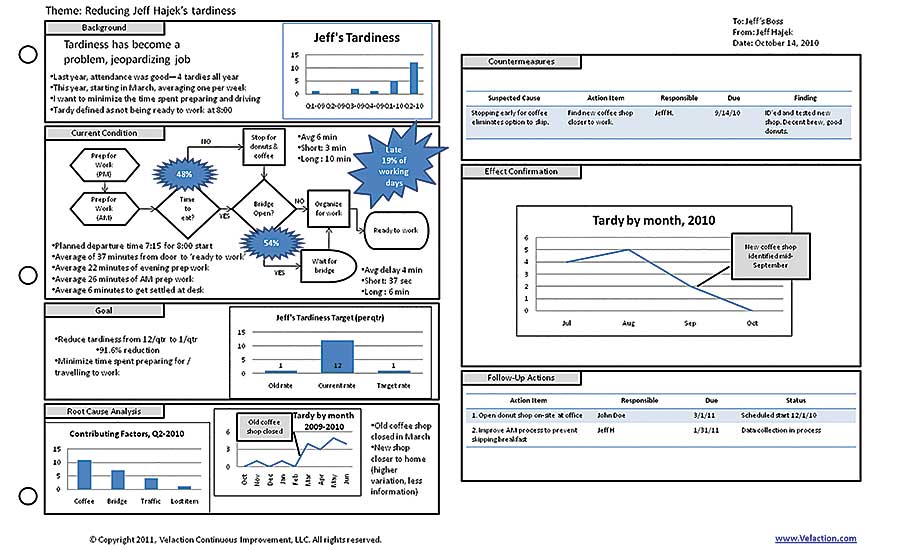If you have been around for a while, you may recall the “Parts is Parts” commercial from the Wendy’s fast-food chain. As bad as the “parts is parts” idea is for chicken sandwiches, it’s equally bad for manufacturing. Parts are not necessarily parts, especially when some portion of those part numbers have defects. If we have clearly identified the part numbers with the defects, it is important to segregate this group from the other part numbers. Not taking this seriously will result in a bigger problem: more parts that will have to be pored over to determine if there is a fault.
We will need to get to the bottom of the problem. In the automotive world, we may employ either the 8 Discipline (8D) or A3 approach. The 8D approach is called that because of the number of steps that are taken to identify the cause of the problem and walk through its resolution. The disciplines are as follows:
- Create team.
- Describe the problem.
- Containment action.
- Identify root cause.
- Develop corrective action.
- Implement corrective action.
- Preventive measures.
- Recognize the team.
The A3 approach is named after the paper size that is used for the root-cause analysis and corrective action. A3 does the same thing as 8D; it provides guidance for solving a problem and a method for communicating the actions taken and results to the team. The A3 approach encourages engineers to create graphical representations of the problem and the corrective actions.
Experience suggests either approach works well. Personally, I have a mild preference for the A3, because it is possible to diagram the root cause graphically in a predefined space on the form. Graphical representations of a situation can be more quickly and easily understood compared with an abundance of words.
More important than the document format is the approach we take to understanding the situation. For example, it is more important to approach the problem without preconceived notions of the problem. We should follow the chain of evidence. When we think we know the source of the problem, we are inclined to find evidence that supports our assertion or find evidence that we interpret as confirming this assertion. This is called confirmation bias, and this is not helpful for determining the true root cause and not just another interim symptom or a contributor to the resulting failure.
In fact, there are a multitude of biases and distractions that can creep into our exploration of the problem. To reduce the possibility of these intrusions, it’s best to formalize the processes associated with finding, reviewing and interpreting the evidence. We will also work to understand the evidence by performing experiments that test what we think is evidence of cause and effect.
To truly get to the root of the situation, engineers will need an open mind, critical thinking and a formal structure to keep from jumping to conclusions or drawing errant conclusions from our root-cause analysis. Either of the latter will likely result in us seeing this same failure symptom again. And again. And again.
Editor’s note: The author of numerous books on project management, Jon has held engineering and management positions at Volvo Trucks, PACCAR and other companies. Email Jon at jon.quigley@valuetransform.com

